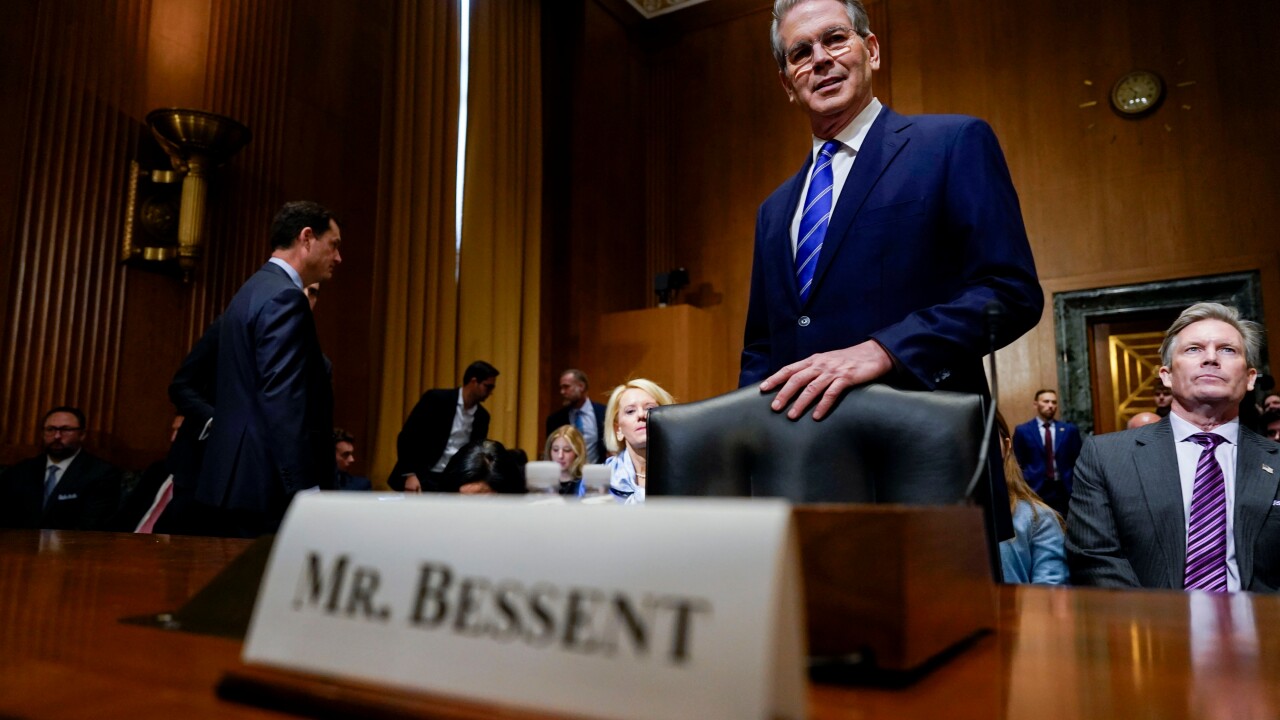-
Bankers and tech vendors assert that mobile apps must be independent of online banking at BAIs Retail Delivery conference.
November 11 -
Transaction data tied to rewards comes with a twist: donating cash back to charity. The California startup called Mogl seeks credit union partners.
January 13 -
U.S. Bank announced Thursday that it's launching Mitek's Mobile Photo Bill Pay service to its retail customers.
March 7
U.S. Bancorp (USB) has found a novel way to persuade depositors to try online bill pay a feature known to discourage customers from moving accounts but that banks nationwide are struggling to get more accountholders to use.
To get new customers' attention, bankers in the Minneapolis bank's branches demonstrate bill pay by making a $1 donation from a just-opened account to charity (which the company reimburses). The philanthropic nature of the transaction allows for a softer sell. Employees are more comfortable bringing up the subject of bill pay with customers in this context than, say, telling them it's an easier way to pay the gas bill.
"We try to communicate [new features] so bankers get excited," says Jody Bhagat, a senior vice president and the head of online sales, marketing, and user experience at U.S. Bank. "If bankers are excited about something, it will come through in the customer experience."
Since the Bill Pay Giving program debuted two years ago, U.S. Bank says, it has seen results: the number of customers who are actively using online banking within 30 days of in-branch account opening improved by 27%. In internal company surveys, 93% of bankers agreed that the program helped facilitate the bill-payment conversation with customers.
Banks want customers to use online bill pay because it promotes "stickiness" a consumer who has set up recurring monthly payments has a strong disincentive to take her business to another bank, all other things being equal.
"Bill pay is one of those foundational types of activities that keeps people coming back," says Mark Schwanhausser, director of omnichannel financial services at Javelin Strategy & Research. But "adoption for bill pay is flat. Something needs to change it. ... 2014 has the potential to be a year about bill pay."
According to a survey of 3,000 individuals by the tech vendor Fiserv (FISV), only about 40% of online banking users pay their bills through their bank's or credit's union's website.
Younger demographics could add to the industry's bill-pay dilemma. Research shows millennials wish to pay their bills through
"Younger consumers aren't interested in online payments," said Teresa Epperson, managing director of AlixPartners, at a retail banking conference last year.
There is some precedent for U.S. Bank's solution. Some banks offer ATM features that let customers donate to charities, while California startup
Vendors are making investments to improve the user experience to encourage use of bill pay.
Fiserv announced in late January new gamelike features built into its CheckFree RXP electronic bill-pay service. The update, for an offering that counts more than 4,000 banks and credit union customers, includes a progress bar and tutorial elements to simplify the user's experience. Such tactics have been deployed in the past.
U.S. Bank will make matching donations up to $50,000 a year per charity for every dollar donated through a new account in the Bill Pay Giving program. The eligible organizations are in four categories: disaster relief, hunger and poverty, education and arts and the environment. All told, the bank has made $450,000 in contributions, through the accounts of roughly 340,000 new customers.
"We know customers that engage with online and mobile platforms have deeper relationships with us and obtain more value from the bank," Bhagat says. But U.S. Bank knew the place to get them engaged was in the branches, where the majority of its account openings take place, and of which U.S. Bank has 3,088 in 25 states.
U.S. Bank, which also lets people enroll in bill pay through its mobile channel and use the
Engaging people with digital services, of course, also requires frequent upkeep of functionality by banks, so U.S. Bank adapted the bill-pay feature for its mobile app, rather than simply copying and pasting the online version.





